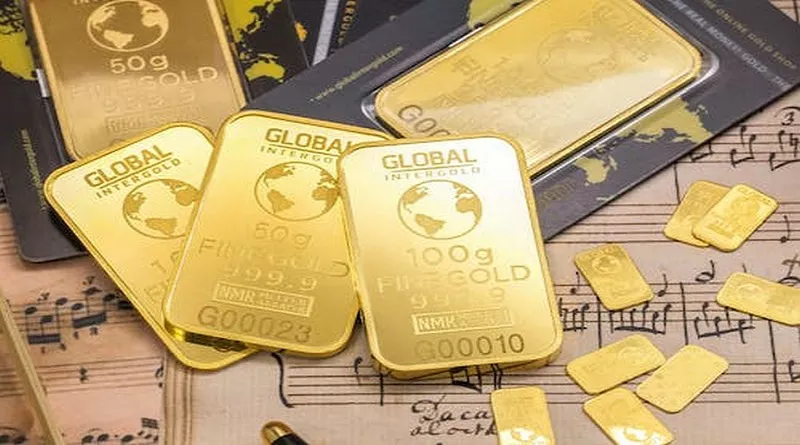Gold, an enduring symbol of wealth and stability, is often measured in various weights, with a quarter ounce standing as a common unit for investors and collectors alike. In this comprehensive guide, we embark on a journey to unravel the intricacies of determining the worth of a quarter ounce of gold in today’s dynamic market.
Understanding Gold Weights: A Preamble to the Quarter Ounce
Before diving into the specific value of a quarter ounce of gold, it’s crucial to establish a foundational understanding of how gold is weighed and priced.
1. Troy Ounce vs. Avoirdupois Ounce: The Gold Standard
Troy Ounce in Gold Measurement:
Gold is weighed using the troy ounce, a unit of measure distinct from the avoirdupois ounce commonly used in everyday contexts. One troy ounce is equivalent to approximately 31.1035 grams.
Common Gold Weights:
Gold is commonly traded in various weights, including one gram, one-tenth ounce, quarter ounce, half ounce, and one troy ounce. These weights allow for flexibility in trading and investing.
2. Breaking Down the Quarter Ounce: A Fraction of Wealth
Quarter Ounce Defined:
A quarter ounce of gold is precisely 7.7758 grams. This weight is often favored by both investors and collectors due to its manageable size, making it an accessible and versatile unit for various purposes.
Visual Representation:
A quarter ounce of gold is approximately the size of a quarter-dollar coin, providing a tangible reference for those seeking to visualize this specific weight.
3. The Market Price: Gold’s Ever-Changing Value
Spot Price and Market Dynamics:
The market price of gold, commonly referred to as the spot price, is determined by global market dynamics. Factors such as supply and demand, economic indicators, and geopolitical events contribute to the constant fluctuations in gold prices.
Real-Time Updates:
The spot price is subject to real-time changes, reflecting the dynamic nature of the precious metals market. Investors and collectors keen on determining the value of their quarter ounce of gold must monitor these fluctuations regularly.
4. Calculating the Value: The Formula Unveiled
Simple Multiplication:
Calculating the value of a quarter ounce of gold involves multiplying its weight by the current spot price. The formula is straightforward: Value = Weight (in troy ounces) x Spot Price.
Example Calculation:
Using the formula, if the spot price of gold is $1,800 per troy ounce, the value of a quarter ounce would be $450 (1/4 x $1,800).
5. Premiums and Fees: The Additional Costs
Understanding Premiums:
In addition to the spot price, buyers and sellers must consider premiums, which are additional costs associated with acquiring or selling physical gold. These premiums cover expenses such as minting, refining, and dealer profit.
Buyer’s and Seller’s Premiums:
The buyer may encounter a premium when purchasing gold, while the seller may face a premium when selling. The combined impact of these premiums influences the overall cost or proceeds of a quarter ounce of gold.
6. Numismatic Value: Beyond the Intrinsic Worth
Collector’s Appeal:
Quarter ounces of gold, especially in coin form, may carry numismatic value. Collector’s appeal stems from factors like rarity, historical significance, or unique design elements. Numismatic value can elevate the overall worth of a quarter ounce of gold.
Grading and Authentication:
Professional grading and authentication services further contribute to numismatic value. Collectors often seek coins that have been graded for their condition and authenticity, enhancing their desirability.
7. Market Conditions: External Factors Affecting Value
Economic Trends:
The broader economic landscape plays a significant role in determining the value of gold. Economic stability, inflation rates, and investor sentiment all influence gold prices and, consequently, the worth of a quarter ounce of gold.
Geopolitical Events:
Geopolitical events, such as political instability, global conflicts, or changes in government policies, can create fluctuations in the precious metals market. Investors must remain vigilant to external factors that impact gold values.
Conclusion: The Versatile Charm of a Quarter Ounce of Gold
In conclusion, the worth of a quarter ounce of gold is a dynamic interplay of its intrinsic weight, the ever-changing spot price, and additional factors such as premiums and collector appeal. As investors and collectors navigate the world of precious metals, understanding these elements is key to making informed decisions.
Whether acquired for investment diversification, as a store of value, or for the sheer pleasure of collecting, a quarter ounce of gold stands as a versatile and accessible unit. Its tangible nature, coupled with its inherent value and historical significance, solidifies gold’s enduring allure in the world of finance and precious metals.

